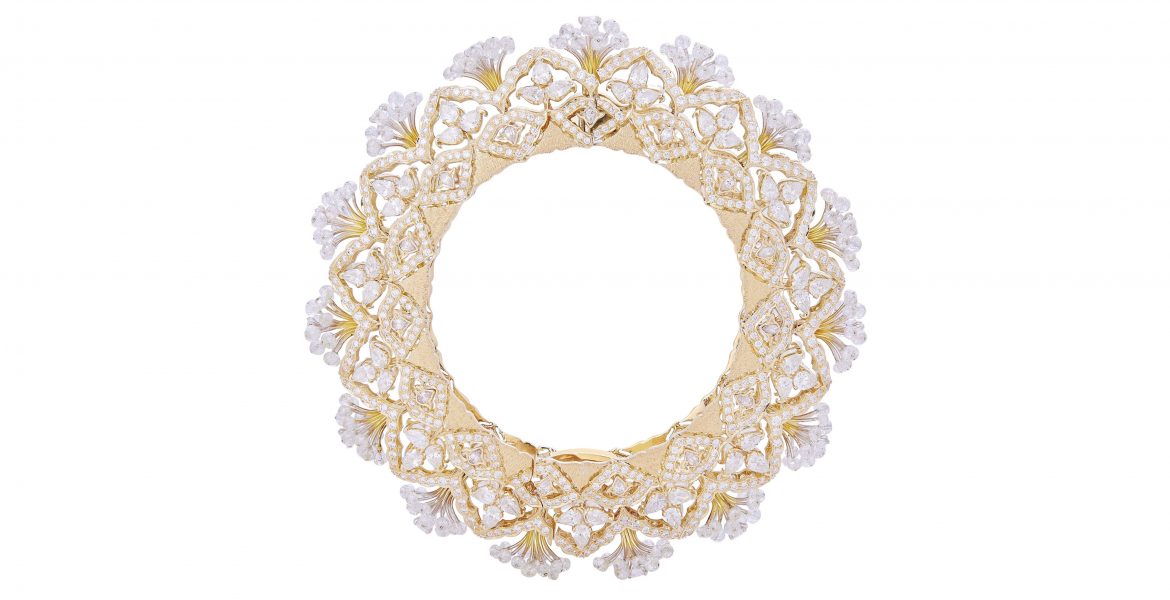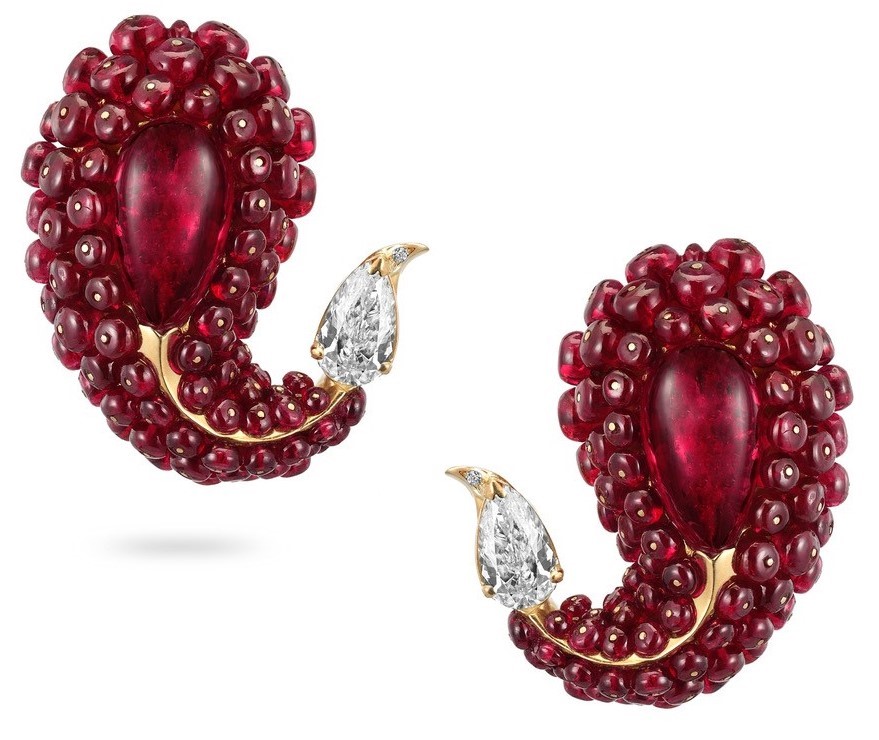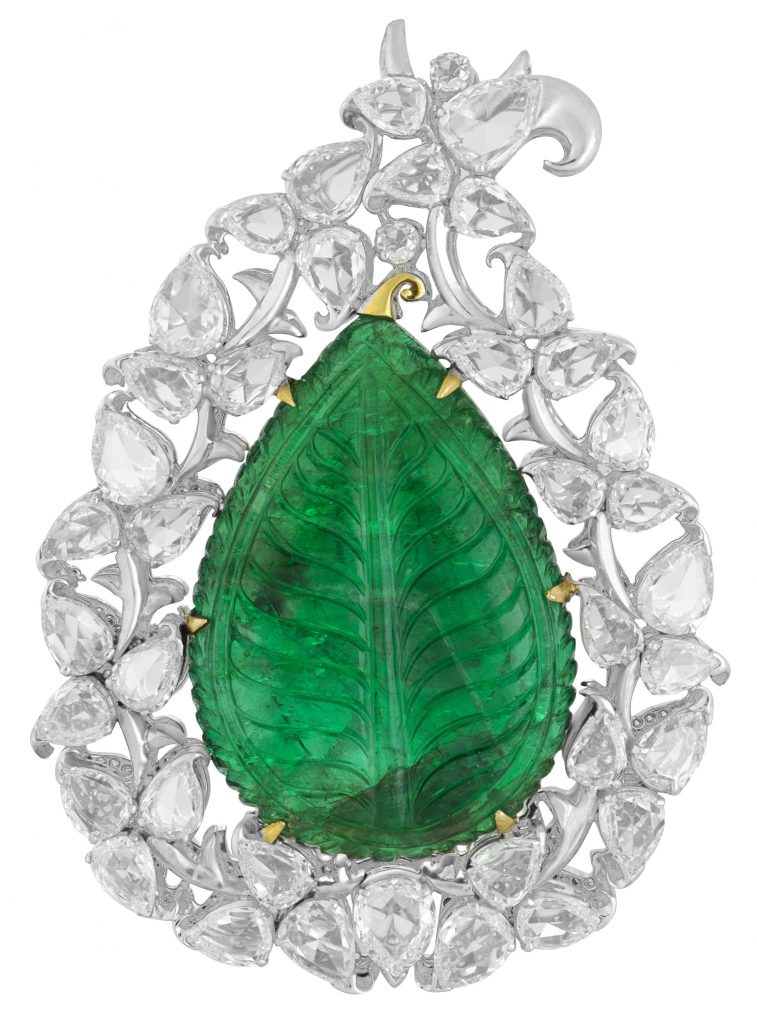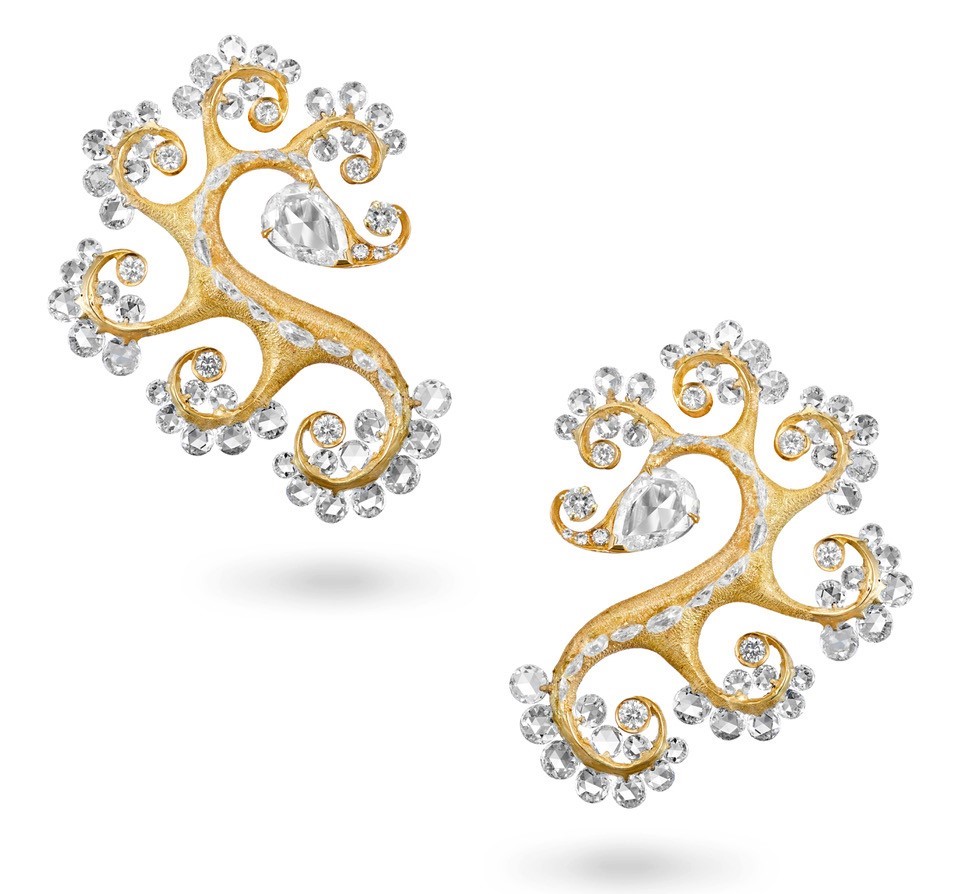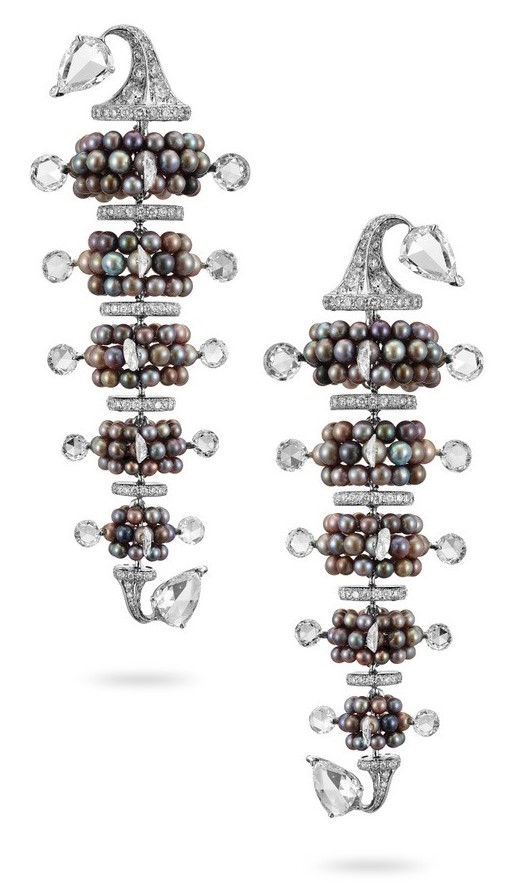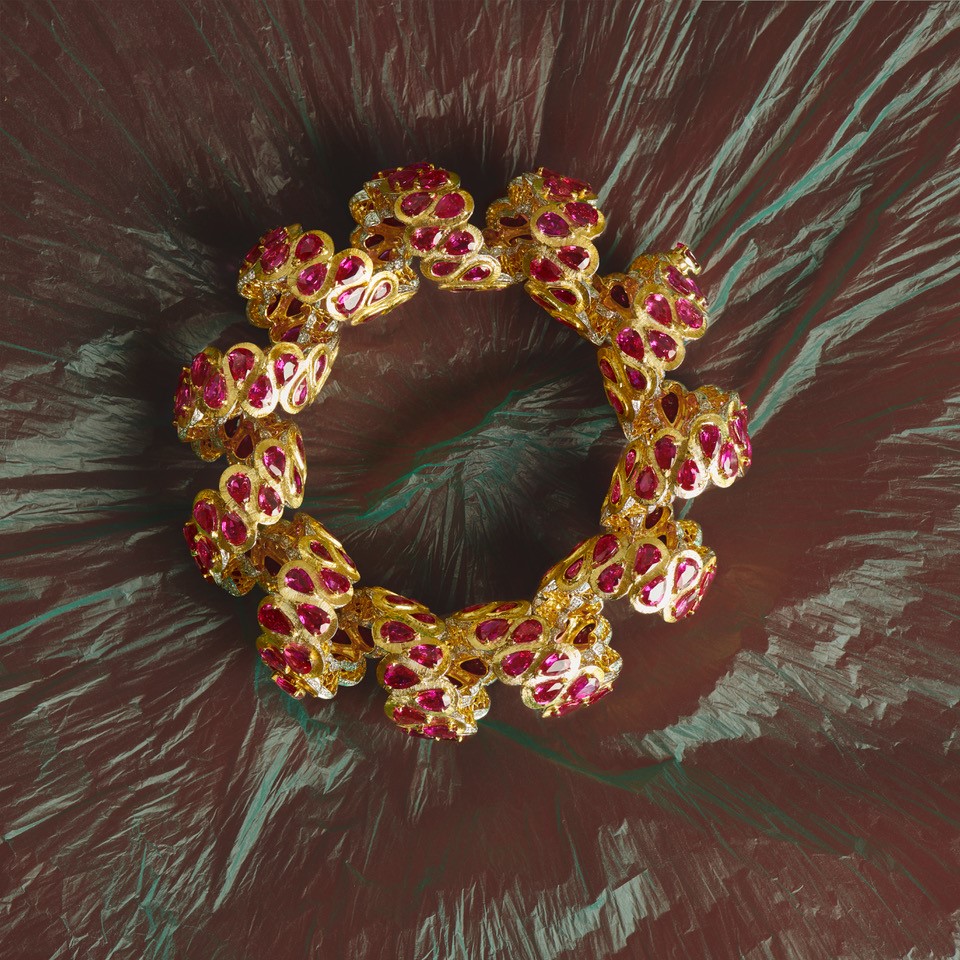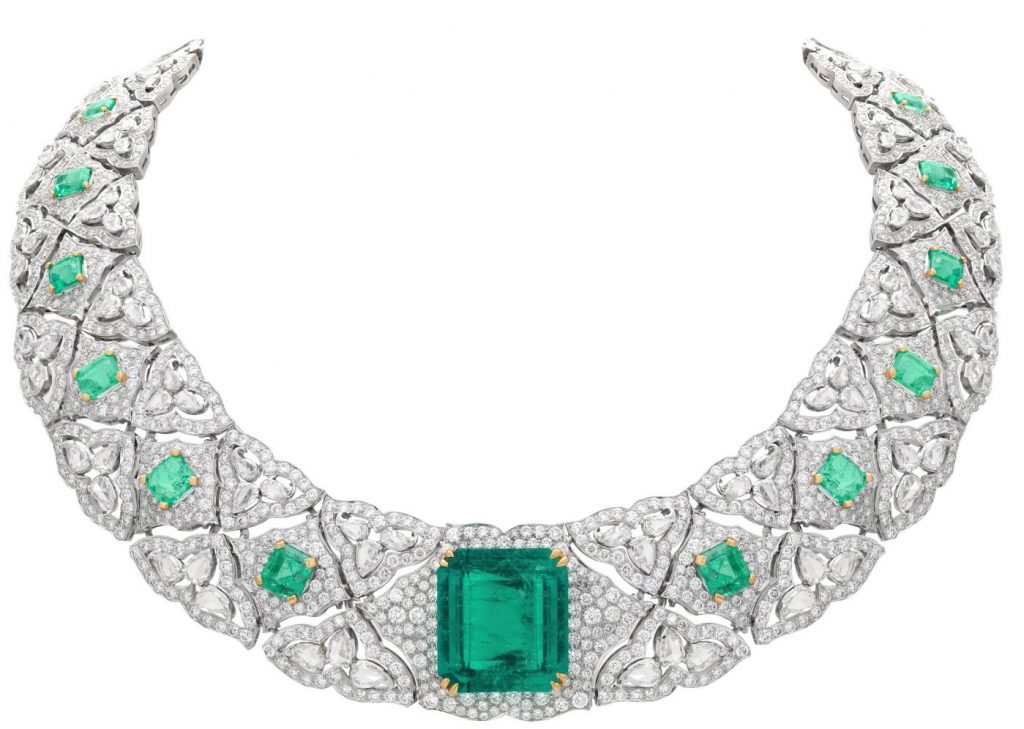Off beat yet integrative of traditional approaches, Mumbai-based jewellery designer Sajil Shah is a master craftsman – a hidden gem in the world of jewellery designers. Although restrained and guarded in his demeanour, his jewellery designing skills speak volumes of his command over his eloquent artistry. Gold is the canvas on which he embellishes textured strokes – a signature style that exhibits his love for adding after-effects on the metal.
A Commerce graduate from Mumbai, Shah was hooked by the mesmerising gemstones whilst working with his father, a diamond manufacturer. Later, armed with a degree in Management from Lancaster University, he moved on to training as a goldsmith in Florence, Italy. Thus, began his love affair with gold and diamonds and the processes carried out at the workbench.
Back in India, he realised that there was a huge void in the niche jewellery segment, which impelled him to work with handcrafted jewellery spiced with diamonds and gemstones. The refulgent and majestic jewels are a testimony to one man’s pursuit of excellence.
His aesthetically done-up brand boutique Sajjante (meaning ‘to be attached with’), located in South Mumbai, showcases his hypnotic creations in standalone, tall vitrine cabinets, reflecting his need for perfectionism and passion in equal measure.
From the time you started your journey as a creator of jewels in 2011 – until now – has the Indian consumer evolved in terms of aesthetics? If so, how?
The biggest change I see is that people want to buy unique jewels, which complement their personality rather than resorting to calculating carat prices and weight.
The Indian customer is varied. Most who were wary of buying any form of rose cuts are now accepting them with caution. They like different cuts with briolettes and old cuts because they think they are more unique.
How has the creative journey been for you so far?
There have been some great periods for me where design ideas just flow, and there have been times where pragmatism fights creativity in my mind – and sometimes, only sometimes, pragmatism wins.
Every artist of your calibre likes to reinvent himself to find a new lexicon for his collections. Earlier, you were inclined towards techniques such as Nido di Vespe and Rigato. Do they still figure in your creations or have you introduced some other exciting methods to articulate your ideas?
Yes, these techniques still feature in some of my jewels. My love for adding textures and effects on gold doesn’t seem to go away. I use these techniques along with some more new ones like the prongless diamond settings in my latest designs – the end result makes these sparkling stones appear as if they are floating in mid air.
These goldsmithing techniques are native to Florence. Nido di vespa is the honeycomb-like lace created from a single sheet of gold metal. Rigato or hand engraved lines on the metal lend a satiny sheen, while Segurito furnishes a textured feel resembling fine sand grains. These are Western techniques, not traditional to Indian jewellery, but go very well with Indian sensibilities and motifs. These techniques particularly stand out in yellow gold, which is synonymous with Indian jewellery.
Have you experimented with metal other than gold and silver in this period? What inspires you?
No, but I have thought of experimenting with platinum and aluminium. My creations are inspired by my experiences, old architecture and contemporary forms. Design is all about adding subtle touches that add an intriguing aspect to a piece of jewellery. I cast away a lot of ideas – perhaps only one in 25 ideas comes to life. Some get killed at the design stage and others in the making stage.
Of all your creations, tell us about two or three pieces that you found difficult to execute?
In the Victorian age, people used to wear a stiff piece of clothing around their necks called a ruff. I was so inspired by its form that I tried to make a ruby-studded bangle. I had underestimated the complexity involved in creating it – it took me two years after it was originally conceived, not just because the work was very intricate, but also there were long gaps of inactivity because I was stuck and could not move ahead without breaking and remaking the bangle.
Apart from retailing in India, do you also export?
I also retail in London, through Symbolic & Chase.
With the rapid progress in technology, have you tried blending technology with handcrafted methods?
Yes, I have tried, but only to be disappointed because making jewellery by hand can help control form, shape, volume, finish and proportion as desired. I found in trying to hasten the process through technology, the final product always was a bit compromised.
You love to travel, but in these unprecedented times when there is a near-ban imposed on travelling, have you taken up any other hobby?
During the lockdown, I have realised my love for plants; I’d not go as far as calling it gardening, but I definitely look at them in a new light.

